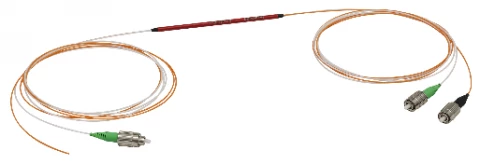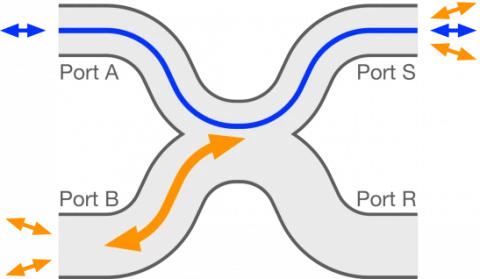Description
The double-clad fiber couplers developed by Castor Optics combine single-mode light transmission with multimode light transfer. Light transmission in the core is quasi-lossless from Port A to Port S, and again from Port S to Port A (see diagram). In the inner cladding of the double-clad fiber, light transfer occurs from the inner cladding of Port S to the multimode branch called Port B in couplers designed for light collection. Bi-directional double-clad fiber couplers allow for efficient injection (Port B to Port S) AND collection (Port S to Port B).
Double-clad Fiber Couplers
Specifications
| Single-mode Central Wavelength: | 530, 780, 1060 or 1300 nm |
|---|---|
| Single-mode Insertion Loss: | < 0.5 dB |
| Multimode Transfer: | ≥ 60% |
| Multimode Spectral Range: | 400-1600 nm |
Applications
- Optical Coherence Tomography (OCT)
- Fluorescence Imaging
- Confocal Microscopy
- Spectroscopy
- Surface Plasmon Resonance (SPR) Sensing
- Speckle-Free Single-Fiber Endoscopy
- LIDAR
Frequently Asked Questions
What are double-clad fiber couplers?
Double-clad fiber couplers combine single-mode light transmission with multimode light transfer.
What are the applications of double-clad fiber couplers?
Double-clad fiber couplers are used in Optical Coherence Tomography (OCT), Fluorescence Imaging, Confocal Microscopy, Spectroscopy, Surface Plasmon Resonance (SPR) Sensing, Speckle-Free Single-Fiber Endoscopy, and LIDAR.
What is the difference between extraction couplers and bidirectional couplers?
Extraction couplers allow for efficient multimode transfer from Port S to Port B, while bidirectional couplers can be used for both extraction (Port S to Port B) and injection (Port B to Port S) of multimode light.
What are the specifications of the double-clad fiber couplers?
The specifications include insertion loss, multimode transfer efficiency, maximum power level, port configuration, fiber lead length, and dimensions of the ports.
Are there any limitations or considerations for using double-clad fiber couplers?
Photodarkening may occur at lower wavelengths, and performance in the water absorption region centered at 1388 nm is not guaranteed. Coupler performance under high-power conditions should be determined within the user's setup.
Similar Products

1310 Standard Y-Waveguide
Shanghai Aoshi Control Technology Co.Ltd

LN15-22CFH Lithium Niobate Integrated Optical Multi-Function Chip Y-Waveguide
Shanghai Aoshi Control Technology Co.Ltd
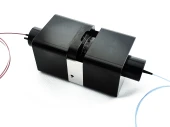
Ascentta Tunable 1x2 Optical Coupler (1270, 1310, 1450, 1550, 1650nm)
Ascentta
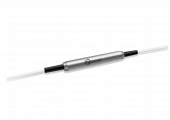
Polarization Maintaining Filter Coupler-PMFC
GKER Photonics
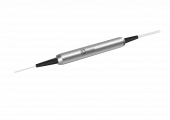
Polarization Maintaining Tap Coupler-PMTC
GKER Photonics
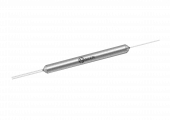
980 -1060 nm Singlemode Coupler
GKER Photonics
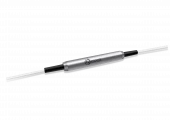
Multimode Fiber Filter Coupler-MMFC
GKER Photonics
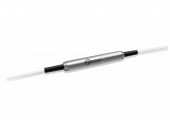
Singlemode Broadband Coupler (GK-SBC Series)
GKER Photonics
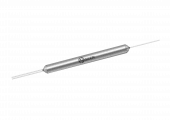
488 - 2100 nm Polarization Maintaining Fused Coupler-PMC
GKER Photonics

Singlemode Broadband Coupler 850 -1310nm
GKER Photonics
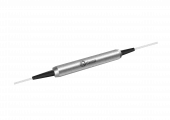
Polarization Maintaining Tap Coupler
GKER Photonics
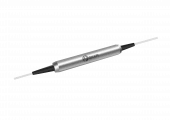
1550nm Ultra Low Ratio Tap Coupler GK-LTC Series
GKER Photonics
Thank You!
Your inquiry has been received.
Create an account by adding a password
Why create an account?
- Auto-complete inquiry forms
- View and manage all your past messages
- Save products to your favorites
- Close your account anytime — no hassle
